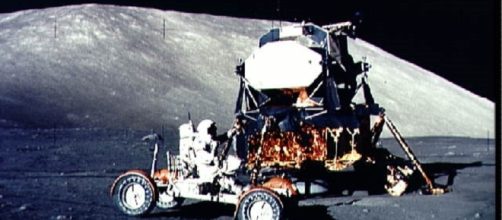Space.com recently reported that a private German group, Part Time Scientists, will mount an expedition to the moon sometime in 2018. The group used to be part of the Google Lunar X-Prize but was obliged to drop out due to time constraints. However, the mission is notable for what it is going to carry to the moon and where it is going.
The first cell phone relay on the moon
When human beings first landed on the moon, they returned live television using sophisticated antennas that transmitted to huge dishes on Earth that relayed the transmissions to TV networks across the planet.
The great Australian film “The Dish” dramatized how that processed worked neatly.
The Alina lander built by Part Time Scientists is going to deliver two rovers to the lunar service each carrying what are essentially mobile phones that will transmit to an LTE base station built into the lander. The technology was developed by Vodafone. The setup is said to be far more energy efficient than the typical communications technology, a consideration when power is provided by solar panels of somewhat limited capacity. Neither the rovers nor the lander are expected to survive the chilly lunar night, but Part Time Scientists intend to have landers in the future that can survive for a long time on the lunar surface, in effect setting up cell service on the moon.
Expedition to the Apollo 17 site
Besides carrying a number of experiments, including one from NASA, the Part Time Scientists expedition intends to visit the Apollo 17 landing site in the Taurus-Littrow region of the moon. The high-resolution cameras will take a look at the landing site to ascertain what exposure to extremes of heat and cold, sunlight, and radiation has done to the descent module, the rover, the flag, and various experiments and debris left on the moon 45 years ago.
A visit to a place of such cultural and historical significance has to be undertaken with the utmost sensitivity. Groups such as For All Moonkind have been campaigning to make the Apollo landing sites designated protective places so that the footprints will not be disturbed and artifacts not taken away by future treasure hunters.
The German team will have to find a way to send their covers close enough to get meaningful images and video but far away enough to respect the integrity of the site.
Still, the mission, if Part Time Scientists are able to pull it off, will be a neat convergence of two periods of history, the new age of nimble, cheap missions undertaken by the private sector with the heroic age of lunar exploration from the Apollo program. It will be a reminder of what humans once accomplished and what they may yet set out to do.


